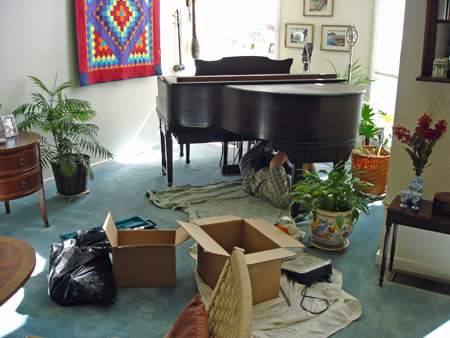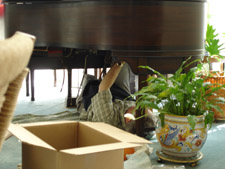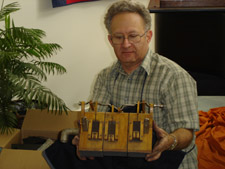The Deconstruction of Mr. Piano
13
April, 2006
 |
| Above:
Mel Septon, noted restorer of automatic musical instruments, harvests
various organs from Mr. Piano's nether regions. Restoration of
Mr. Piano made
sense neither aesthetically nor economically. But the curator
and the Queen
wanted parts that might have a future use in a higher-quality
instrument salvaged. |
| Right:
Removal of the pump and motor. |
 |
 |
Left:
The Duo-Art vacuum pump. The vacuum created by this pump is essential
for the operation all the moving parts of the Duo-Art system. |
| Right:
The Duo-Art expression box and accordion pneumatics. These components,
responding to coding in the piano roll, give the Duo-Art piano
its dynamic range. |
 |
 |
Left:
Portions of the Duo-Art wind motor. This is the mechanism (vacuum
powered) that pulls the piano roll over the tracker bar (see below)
and rewinds it after the roll has been played. |
| Right:
The Duo-Art stack. It contains the components that actually strike
the keys of the piano (at the proper dynamic range). |
 |
 |
Left:
A rear view of the tracker bar assembly. As a Duo-Art roll is
drawn over it, the tracker bar determines which notes are to be
played and their relative loudness or softness. |
Click here to meet Mr. Piano's
replacement.
Comments
or suggestions? click
here to send them to Rich Samuels
Created by
Rich Samuels (e-mail to rich@richsamuels.com)
|